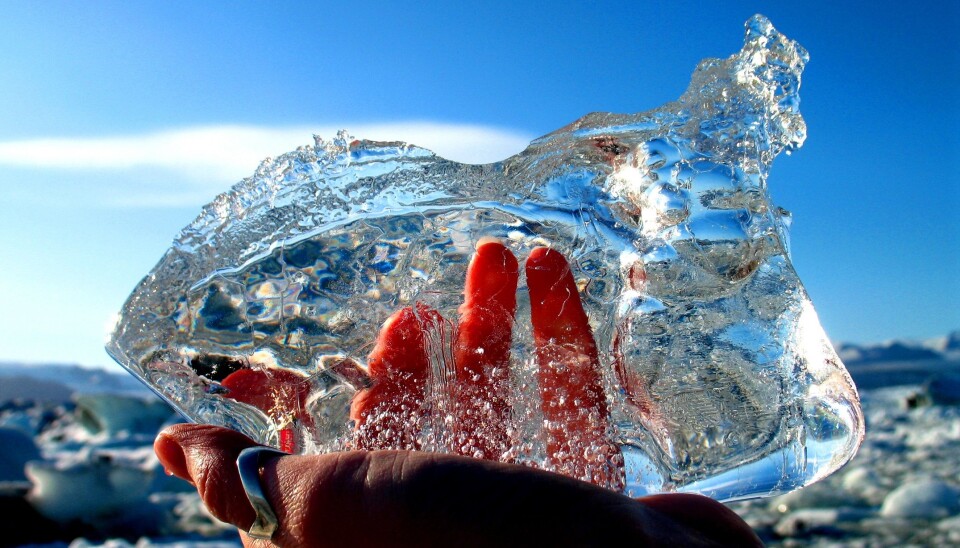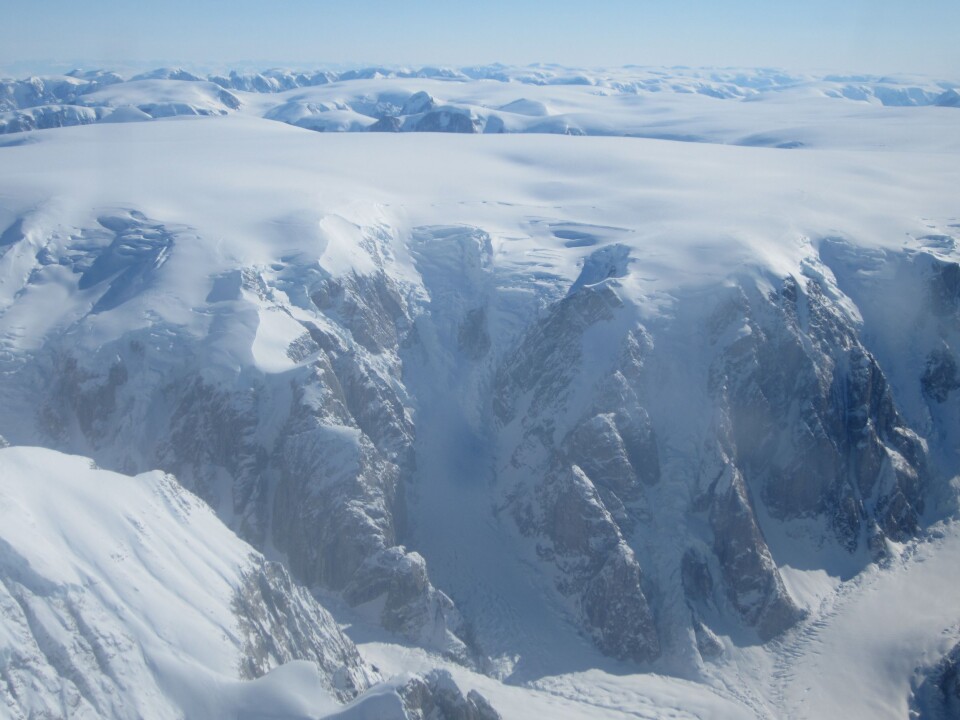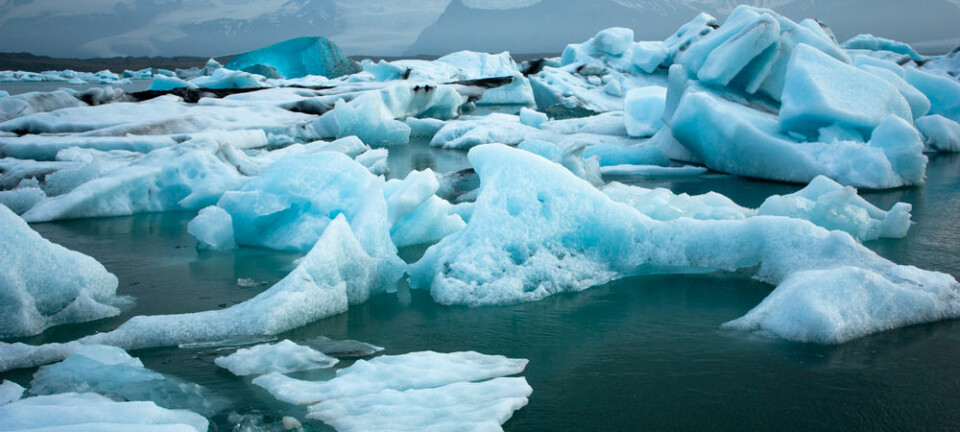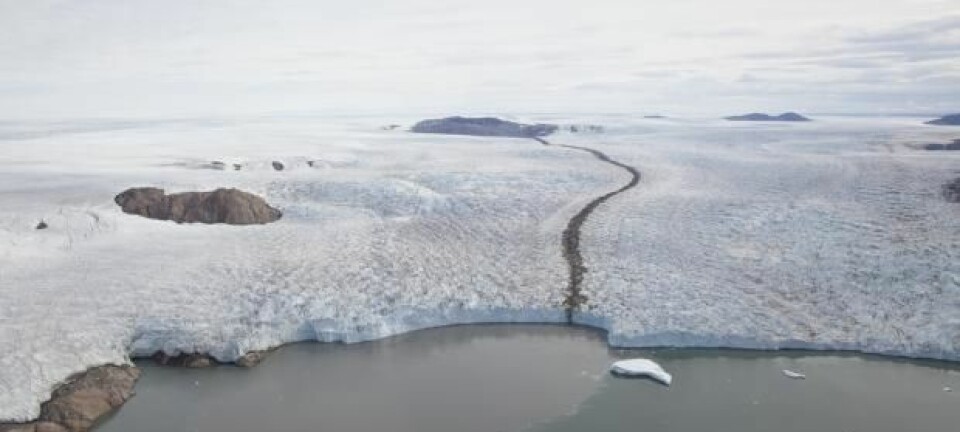
Nordic project will solve a riddle of dramatic climate change
Scientists in Denmark and Norway seek to reveal what caused rapid climate change events first discovered in the early Greenland ice cores.
When Danish scientist Willi Dansgaard from the Niels Bohr Institute and his colleagues analysed the first Greenland ice cores in 1960s and 1970s, they discovered something that no one had anticipated.
Looking at the chemistry of the ice, they saw that the last ice age was pierced by a series of dramatic warm events, where temperatures increased by as much as ten degrees over the course of a decade, before gradually cooling again.
Scientists still do not know for sure what caused these rapid, unstable swings in temperature that became known as Dansgaard-Oeschger events (D-O events), named after two of the scientists who were instrumental in their discovery.

Fifty years later, scientists at the Niels Bohr Institute and the Danish Meteorological Institute (DMI) together with partners in Norway, are now hoping that their basic research project, ice2ice, will finally provide some answers.
“What if these events are a warning for the future? Where we enter an unstable period and flip between extremes” says Dr Ruth Mottram, a climate modeller from DMI and one of the scientists involved with the project.
“The ice2ice project will explore what drives these events and what the implications are for our climate system today,” she says.
Read More: Climate change research was born in the Cold War.
Multi-million Euro Nordic project
Scientists from Denmark and Norway will collect new ice cores and cores of ocean sediment to pin down the precise timing of these dramatic D-O events and figure out the exact chain of events that occurred in their lead up.
The key, Mottram says, is knowing how the Greenland ice sheet and sea ice around the Arctic Ocean was changing at this time.
“Our Norwegian colleagues came up with a plausible hypothesis that these events are so clearly visible in Greenland because they relate to the sea ice cover around Greenland,” says Mottram.
The project will investigate changes in sea ice by looking at chemical analyses of Greenland ice cores—a technique developed by team member Dr. Paul Vallelonga from the Niels Bohr Institute.
“For a long time, trying to understand sea-ice dynamics from proxy records ice and ocean cores has been in the “too hard basket.” Firstly, because sea ice changes so rapidly, and also because it disappears every year. How do you measure that?” says Vallelonga.
“One of the breakthroughs here is to find indicators that [record the sea ice as it] comes and goes every year,” he says, adding that, “in the next couple of years we’re going to learn more about sea ice in the Arctic as the records and the tools continue to be developed.”
Read More: Arctic sea ice is approaching the limit of natural variability
When climate becomes unstable
The scientists have an idea of what might be going on in the lead-up to these extreme events.
During the glacial period Greenland was surrounded by thick sea ice—much more so than today. But while the surface of the ocean was frozen, the ocean underneath was still freely circulating.
This circulating water contains heat energy, which is trapped beneath the ice. Unable to escape into the atmosphere, this heat builds up over time and eventually starts to melt the sea ice from underneath.
“When this happens you get a massive reduction in the amount of sea ice around Greenland and a whole lot of energy is suddenly released to the atmosphere,” says Mottram.
This burst of energy would rapidly increase temperature around Greenland and around the world resulting in the dramatic warm events recorded in the Greenland ice sheet.
Read More: Arctic sea ice at a record low
Unstable climate like a swinging magnet
These events are so unstable that eventually the entire system is pulled back in the other direction, and the climate once again begins to cool.
“It’s like having two magnets with something swinging between the two and it can’t quite decide which magnet it’s attracted too. The pull is not quite strong enough from either magnet to pull the object to one side or the other. So it oscillates from one to the other,” says Mottram.
“That seems to be what we see in these D-O events,” she says. “The atmosphere is not quite stable in one configuration, so it gets pulled back into another. But it’s not stable in that configuration either, so it gets pulled back again.”
See how climate scientists at the Niels Bohr Institute in Copenhagen analyse an ice core from start to finish in the video above.
Read More: When will the Arctic be ice free?
Climate models will tie the evidence together
This sequence of events should be recorded in the chemistry of the Greenland ice sheet and in the surrounding ocean sediments beneath the sea ice.
But to see it, they need to take fresh samples to pick out these rapid changes recorded in the ice and sediments in much finer detail than existing records (see fact box).
Once they have established a story board of events based on the evidence from ice and ocean sediments, the next task is to check whether the climate models agree.
“So what we’re trying to do is to connect the ice core records and the ocean cores with climate models, to try to model and explain what is physically happening,” says Mottram.
Read More: Greenland melt linked to weird weather in Europe and USA
D-O events are like consciousness
Scientists have studied D-O events for fifty years. And many people have experimented with climate models to see if they could simulate them in a virtual world.
But if Mottram and the other ice2ice scientists are correct, then the answer could have been there in the models all along.
“There have been some studies where people have modelled this, but in order to get a D-O-like event, they often have to push their model really hard with some big change. For example, changing the salinity of the oceans. We don’t know if that’s physically possible, it’s just something that people have said ‘OK, maybe this is what’s driving it,’” says Mottram.
“But what you really want to be able to do, is to get the ocean circulation to do it by itself. This is what we call an emergent property,” says Mottram.
Climate models are already capable of simulating such emergent properties. The El Niño is a famous example. Climate modellers have not programmed the model to simulate El Niño, it just happens in response to the model physics.
“That’s why we call it an emergent property,” she says. “It’s not parametrised, it just comes out of the physics. This is want we want to be able to do with D-O events,” says Mottram.
Read More: How the Greenland ice sheet fared in 2016
Testing the sensitivity of our climate system
But why do we need to know about such events that happened so long ago and at a time when the climate was so different to today, when vast swathes of the planet were in the grips of an ice age?
“There’s no evidence that D-O events happen in interglacial [periods], which is what we’re living in. But we know that the atmosphere is being perturbed right now by greenhouse gases, and there are big changes going on in the Arctic,” says Mottram.
One outcome of climate change is that the relatively stable climate that we’ve come to know and in which all human civilisation has developed, may become generally more unstable with greater and more frequent extremes in climate.
Scientists are engaged in a rigorous debate over the future of many key aspects of the climate system that are linked to declining Arctic sea ice and melting of the Greenland ice sheet, such as a vital pattern of ocean circulation in the North Atlantic and the strength and flow of the Polar jet stream.
Being able to characterise and model known periods of instability in the past, such as D-O events, will provide crucial insights into how the climate system may respond to changes that are underway today, says Mottram.
“It’s important to understand the life support system of the planet. The climate really controls everything. If we’re going to do something to seriously knock the planet out of balance, then we need to know and understand what the likely implications are,” says Mottram.
Her colleague and ice2ice team member Dr. Christian Rodehacke, a climate scientist at DMI, takes a philosophical view:
“We need to understand our home. It’s our history and culture. Our ancestors used to build cathedrals, now we build knowledge,” says Rodehacke.
“Knowledge for knowledge’s own sake is very valuable. There may be or may not be spin-offs, but actually being able to understand the these events is important,” he says.









